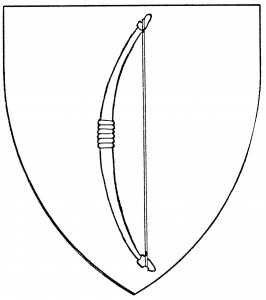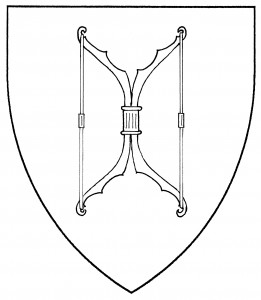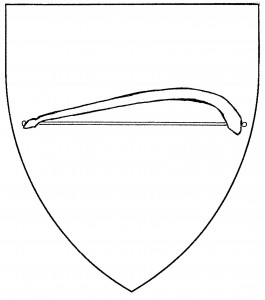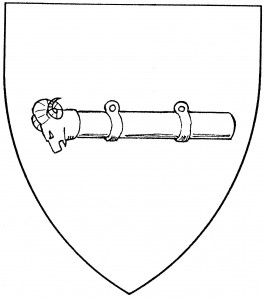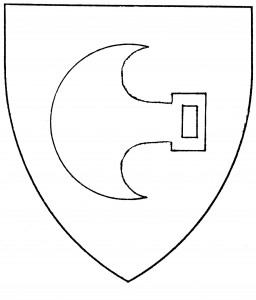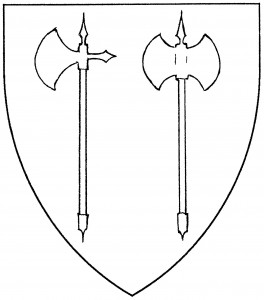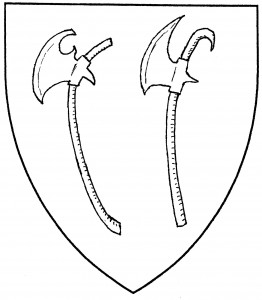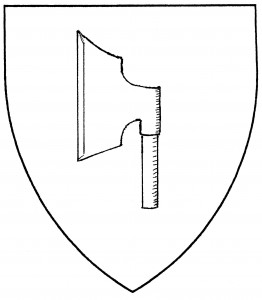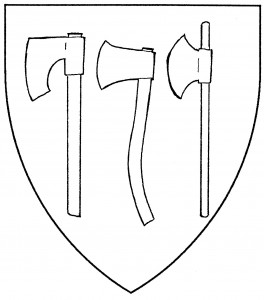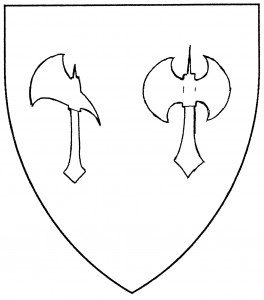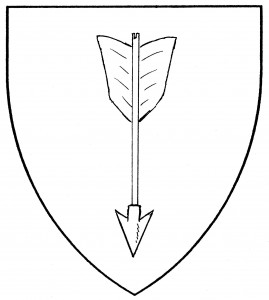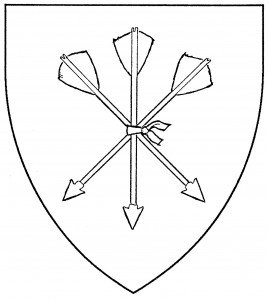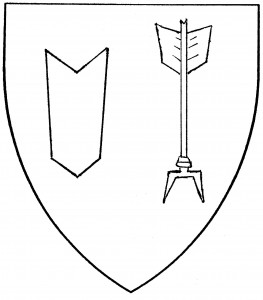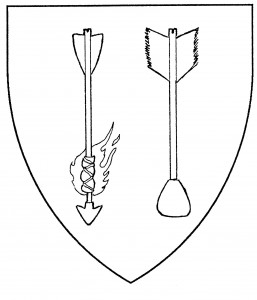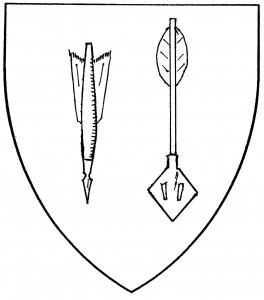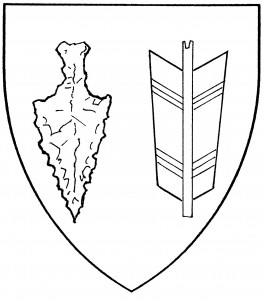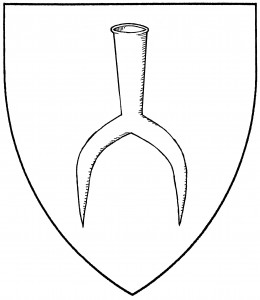A bow is a device for shooting arrows, used in hunting or as a weapon, and consisting of a flexible strip of wood strung with cord. It’s found in the canting arms of Bowes, c.1395 [DBA2 214]. The default bow is the “longbow”, and is occasionally so blazoned. The default orientation for the longbow is palewise and strung; the placement of the string (dexter or sinister) has changed over time. Society practice puts the string to sinister by default; when the bow is fesswise, the string is to base.
The bow’s string is taut and straight by default, as stated above; but we also have examples of drawn bows, with the center of the string pulled back and under tension. A drawn bow almost always has an arrow nocked to the string, as seen in the arms of Schütz, 1539 [BSB Cod.Icon 307:545]; this fact is always blazoned. Society armory has examples of other charges besides arrows nocked to the string of a drawn bow; this usage is deemed a step from period practice.
At one point it was ruled that bows in Society armory should not be drawn recurved, but as period longbows, as in the illustration. However, recurved bows were sometimes depicted in period emblazons, as in the arms of Savolax, Finland; and Society bows have often been drawn with recurved limbs. The matter is left to the artist’s discretion.
A variant of the bow is the “Persian double bow”. This is the Society’s name for a period charge found in Islamic heraldry, in the arms of ‘Ala’ ad-Din Aydaykin ibn Abdullah, d.1285 [Mayer 83]. As a non-European motif, its use carries a step from period practice.
Society armory also has the “musical bow”, sometimes called a “psaltery bow” or “viol bow”; as the name implies, it’s used for playing stringed musical instruments. Though we’ve found no examples of its use as a period charge, it’s allowed in the Society as a period artifact; the illustration is taken from Virdung’s Musica Getutscht, 1511 [Montagu 93]. When found in armory along with a stringed instrument, the simple term “bow” is understood to mean a musical bow.
For related charges, see crossbow. See also arrow.
Giovanni dell’Arco bears: Argent, a bow reversed vert.
Andrew Roriksson bears: Sable, a bow nocked of an arrow Or.
‘Azzah al-Nadirah bears: Azure, on a chevron between two escallops inverted and a Persian double-bow argent, three lotus blossoms in profile azure.
Eowyn nic Wie of Kincora bears: Gules, a bowed psaltery Or between two flaunches ermine and in chief a psaltery bow Or.
